Discover how having an online community gives your company a competitive moat. Should businesses completely shift away from social media platforms altogether? How can you create your app community? Here’s our take on it.
With the outbreak of the global pandemic and other crises in 2020, leaving us more isolated than ever, digital communications have been forced upon our interactions as a way to stay connected. Digital disruption is nothing new, but COVID-19 played a role in the historic proportion – this means changes are required for businesses and their strategies.
Online Community is The Future
Online communities back in the day consisted of free community platforms such as threaded discussions, online forums, bulletin boards, RSS, email lists, and so on. Today, online communities are progressing – free from social media platforms – and experimenting with new strategies, technologies, ways of producing content, and other possibilities.
The world is continuously changing and by 2025, Pew Research Center predicted that adoption of remote processes such as telework, telemedicine, and virtual schooling is foreseen to increase. More people will rely on digital tools, seek out smart gadgets like apps or systems for their needs in day-to-day life. These changes can be seen throughout our communities with people's personal lives being impacted just about everywhere you look.
Community as Part of Your Marketing Strategy
In 2019, nearly 80% of founders reported building a community of users was a crucial part of their business, with 28% claiming this virtual community gave them a competitive advantage and was fundamental to their success. As this trend continues to accelerate – private groups and communities will emerge with a clear and shared goal of building something together. Today, businesses are benefitting enormously from building online communities through the following strategies:
- Gaining new followers through word of mouth – resulting in lower customer acquisition costs.
- Members are unlikely to leave the community because trust has already been formed – therefore boosts brand loyalty.
- Members constantly supporting each other – increase gross margins.
- Why Online Communities?
Many people are taking time out from larger social platforms like Facebook and Instagram. Brands that stick to these traditional platforms entirely are likely to spend a fortune on advertising and miss being seen by their audience. Without a clear strategy, it’ll be hard to formulate the steps to take in the future.
Forecasting helps leaders assess and reposition their company so external forces become advantages rather than disadvantages. To understand cause and effects, leaders will have to set up online communities. Newer spaces give the opportunity for members to connect and find their niche – result in new and meaningful ways of coming together and engaging with their community. The future of community platforms will entail a space where like-minded people can enjoy a space to experience, share ideas, solve any ongoing problems, and strive together.
- What Makes Communities Successful?
What makes successful communities are the community members. Businesses need to understand and identify what are the most popular discussions, engage with them, and bring what is different to the table. By listening to what your community members are saying about your competitors, their likes and dislikes, you’ll also be able to assess what is actually missing from the market, which will in turn give you a competitive advantage.
After gaining some useful insights about emerging external factors, customer needs, and competitors from the digital community, you’ll be able to decide which customer and group to serve, what experience or product will you offer, and bringing them the best possible solutions. Naturally, you'll be able to create a successful online community simply by listening to the members of your community forum.
Branded Community Platforms
Branded community platforms are managed by community owners from their platform, under its own URL. If a user wants to share content online or privately it can be as easy as posting on the platform. One of the advantages of owning your own community is that you'll have complete control over the content & visual identity of the platform. Another important advantage is that it creates a sense of exclusivity between brand and customers, similar to having a subscription-based member site.

To highlight the benefits of branded community, we'll share key advantages below:
- Announcements
Building an online community is the best way to generate discussions and engagements for your product announcements. You can't get this type of feedback from email, even if you send it many times.
- Content Ideas
One of the best ways to learn is through an online community - you can scan discussions and understand knowledge gaps that many others in your industry might not be aware exist - in return, you can educate them with more content on those topics.
- Motivation
How would it feel to have a community of people who are just like you? A place where they can motivate and inspire each other.
- Product Feedback
When we see pain points and feature requests, it's important to hear their side of the story. When dozens of people are commenting in favor that means something is being requested by many others.
Social or Community Platforms: Ad-Driven vs Community-Owned
Currently, social media platforms like Facebook or Instagram are predominantly catered for advertising (Ad-driven) – higher reach, engagement, and revenue but hardly serve their community. Community-owned platforms (Membership-driven) are more focused on involving people and members through the content creation process. The models are usually catered around subscription-based or shared value (co-op based model).
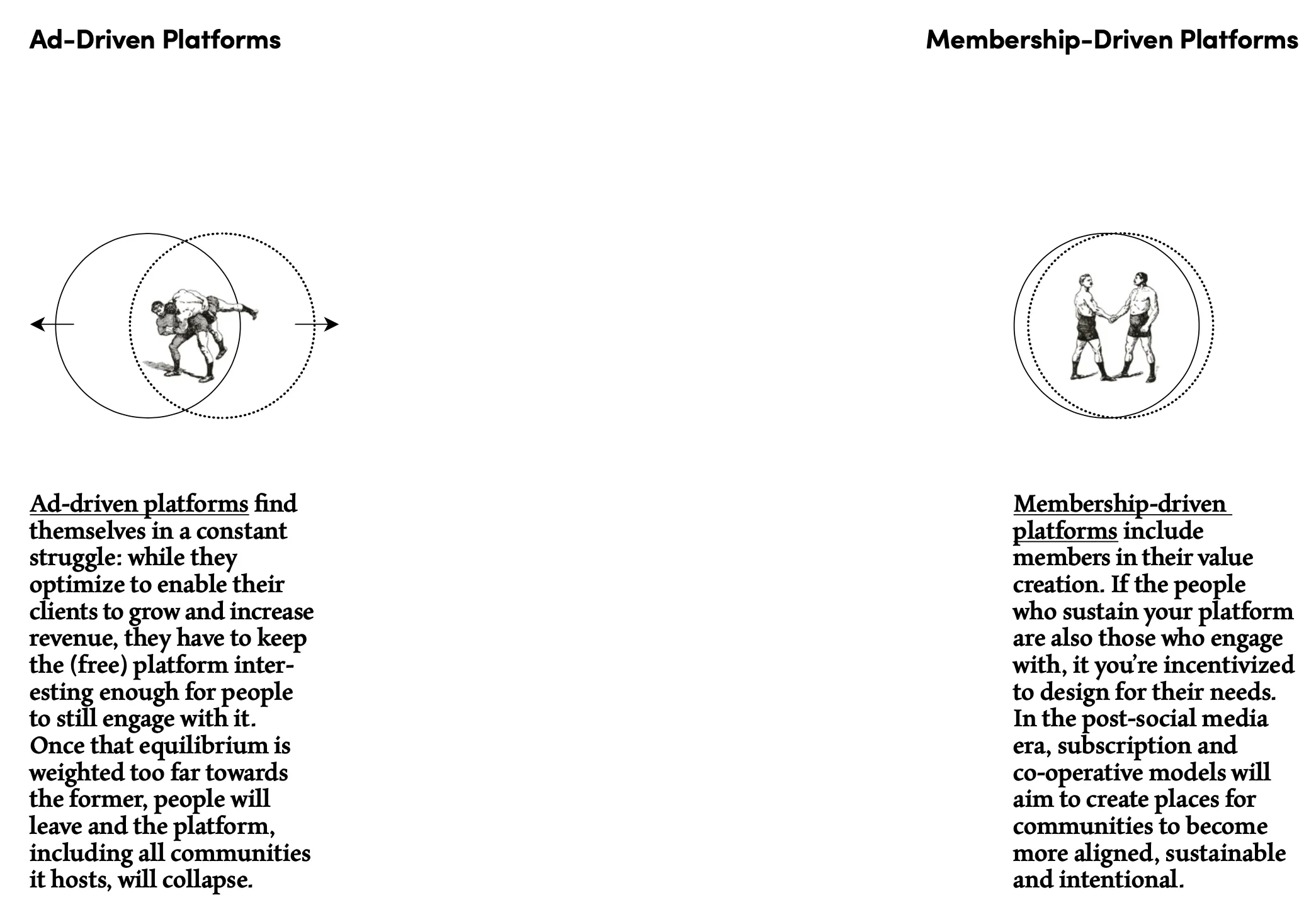
Select a Hosting Platform
Online community platforms share similarities as well as differences to social media platforms-making it crucial to understand your marketing strategy.
You may be responding - "Well, what about Facebook groups and Facebook pages?", while you may be an owner of a Facebook group or page, having your own online community platform is entirely a different ballgame.
LinkedIn vs Guild
Let’s take a look at an example – social media or social networking sites like LinkedIn is considered an ad-driven platform, on the other hand, an app community like Guild is a community-owned platform. Both are technology businesses that connect people to collaborate and work together. They are designed for professions and are free to join with Guild focusing on building an online community while LinkedIn leans towards driving sales, marketing, and the recruitment process itself.
With over 700m+ members on LinkedIn, there is a distinctive larger reach and brand awareness in comparison to Guild. LinkedIn users can post publicly including articles, whereas Guild’s messages are only visible to community members.
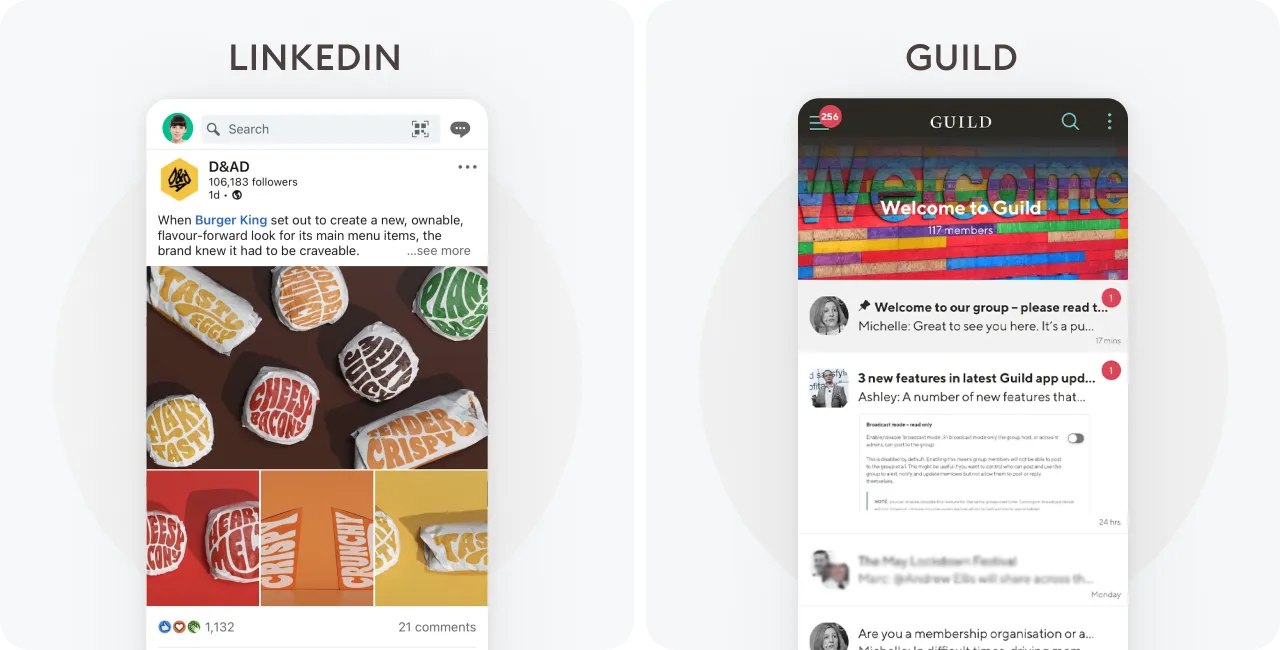
So, Which One Is Better?
In practice, both Guild and LinkedIn are equally as effective – by looking at the marketing funnel, combine LinkedIn for top-of-funnel (ToFu) awareness building and lead generation with Guild for lower down (BoFu) the funnel and post-purchase loyalty and engagement.
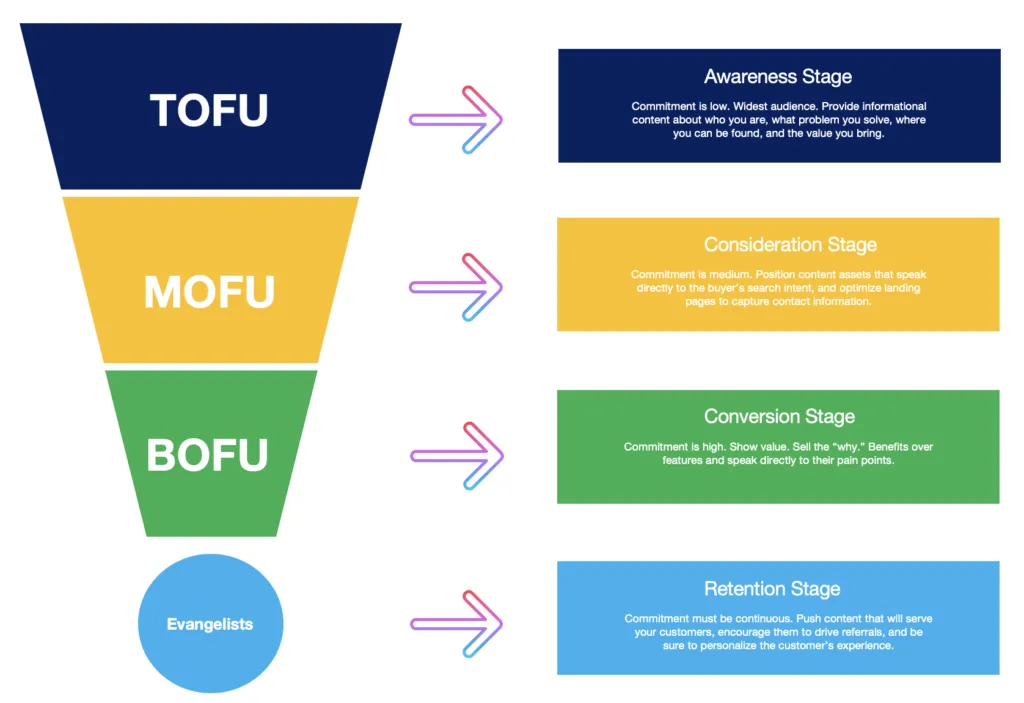
Community-owned platforms are on the rise and ad-driven platforms will stay but the question is, how can you implement them both? By using the marketing funnel in your strategy – you’ll be able to assess where both ad-driven and community-owned platforms should be placed on the model.
Creating an Online App Community
By 2022 we can foresee the number of app downloads reaching up to 258.2 billion, which means shifting towards building an app community will be more possible than ever.
When you build a community-owned platform, you create a level of trust with your customers, which boosts sales. You gain loyal customers and this, in turn, helps bring on board more community members. At the same time, you’ll earn brand advocates who carry your message and encourage existing customers and potential customers to grow and participate in your platforms. It's like having your own membership site at your fingertips - where customers are providing constant feedback.
Integrate in-App Community
The global pandemic has been the most dramatic and powerful shift for businesses as they are forced to make adaptations such as implementing new strategies and new technologies. The surge of SaaS (software as service) and community-based platforms make it easier than ever to stay afloat with responding to your customers’ demands, convene, engage, and build relationships. As a result, the demands of online community platforms among businesses are foreseen to accelerate in the future and will be an unambiguous competitive moat for building a sustainable business model.

Having a social media presence alone is no longer enough - this is why building a branded app community is a smart idea for any business. Imagine your customers having a pool of social networks at the tip of their fingers where they can engage with other community members and interact with each other through your app. It's definitely no easy task to create your own online app community from scratch, but SDK solutions make it possible.
Create in-App Communities with Social Features
Amity Social Cloud offers a full stack of social tools to build an in-app community depending on your business strategy - without the hassle of software development. Enabling powerful plug-in features from high-performance user-generated content including real-time chat, SDK video, social features, push notifications, and AI chatbots. Having in-app SDK features makes building your branded app community easier. Other online customizations and UI kits make it more possible to implement other features like chat, feeds, private groups, bots, and much more.
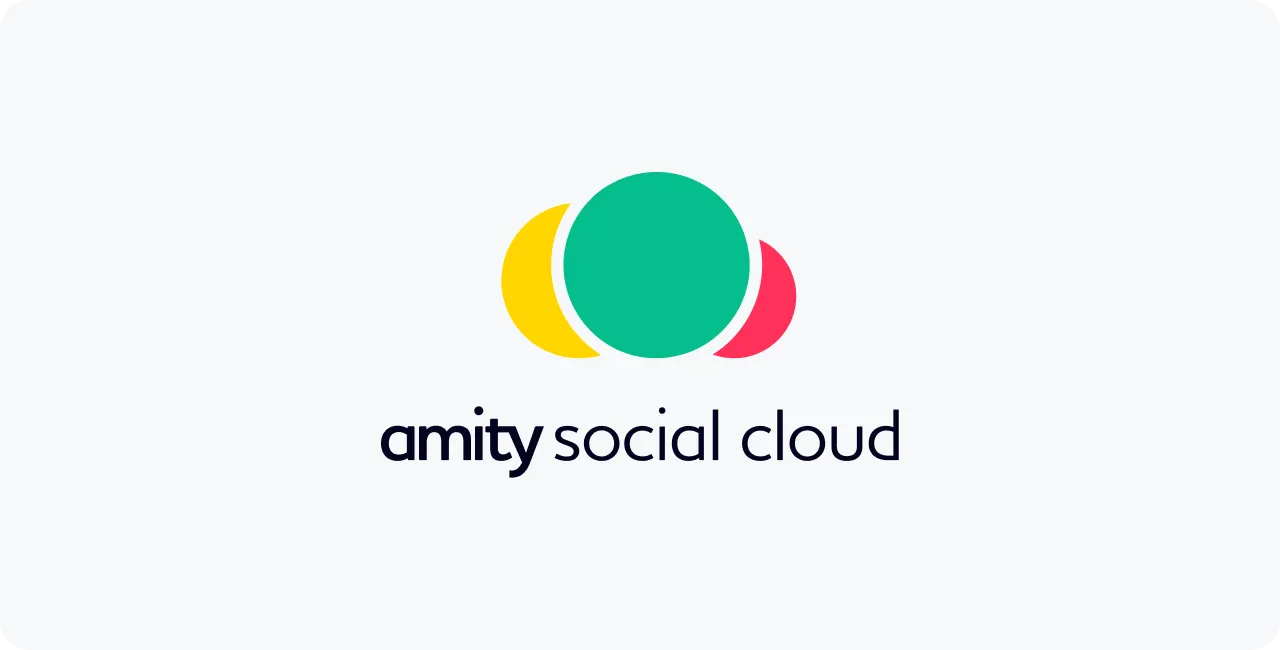
New Features
Amity's Social Cloud just launched some exciting new social features including:
- Post Review: Gives community admin the option to enable content review and approval for all posts by community members. With this moderation option enabled, all posts will be sent held for review before being displayed in the community feed.
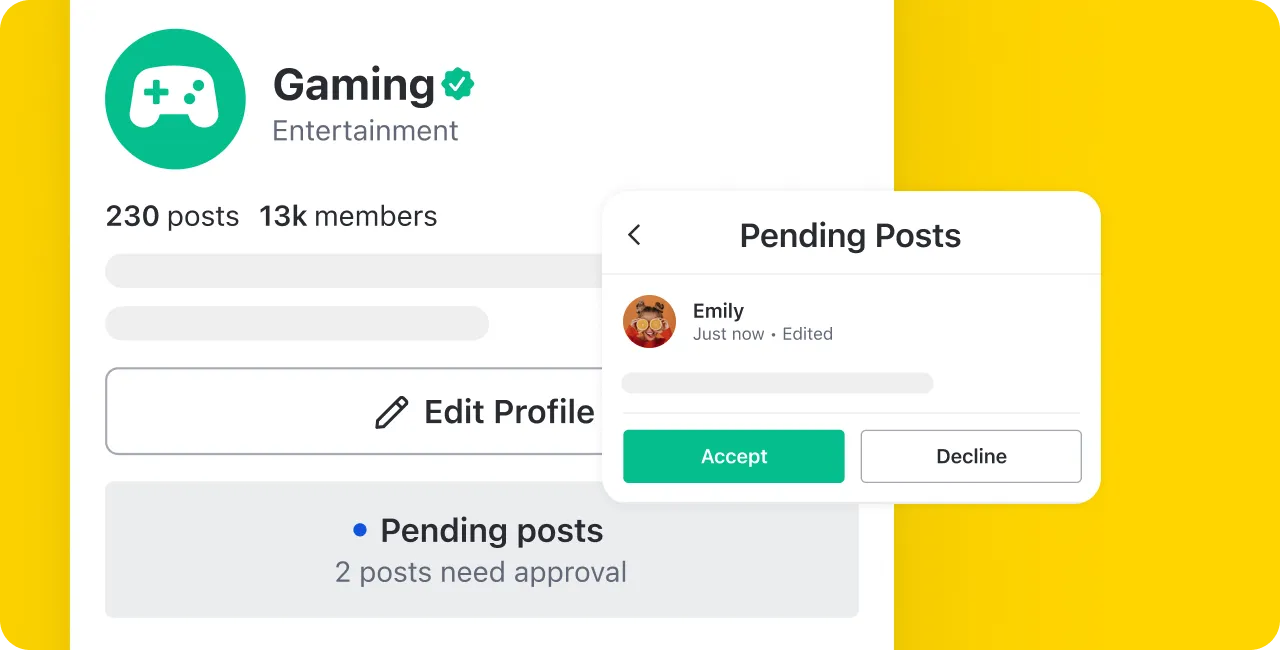
- Follow & Unfollow: With the introduction of Follow & Unfollow users will not only be able to follow other users but also determine the visibility and the accessibility of data in user feed and global feed data. This new feature also comes with follow status and connection counter functionalities.
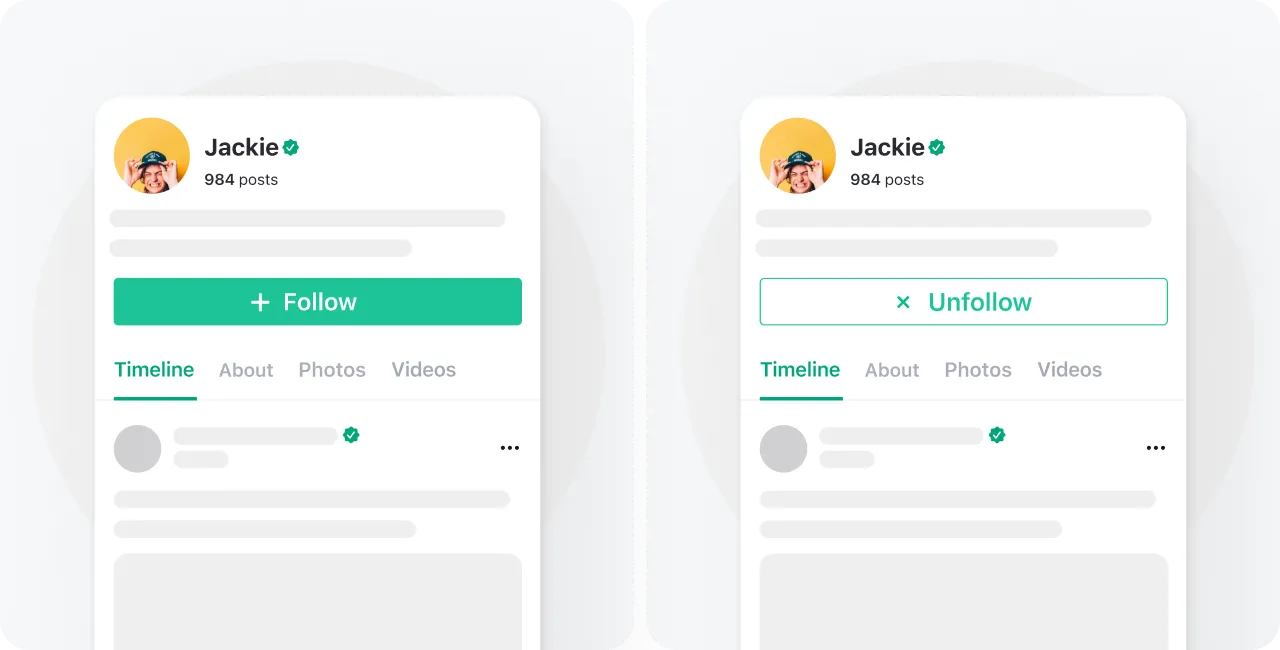
- Video Posts: Video posts allow users to upload videos on all types of feeds. It's a great way to engage your audience and will greatly enhance the social experience of your users.

Here's how your business can benefit from integrating Amity Social Cloud into your app community:
1. Collect Data to Improve in-App Community
With your in-app community, you can collect all the necessary information you need from your users without relying on other online ad-driven social network platforms. This means you'll acquire data instantly, and you can check them against your app metrics in real-time. This way, you'll make continuous adjustments to your app. You can minimize your spending on ads to invest more time creating an in-app community and allocate more time improving your app to elevate user experience.
2. Online Community Members Feels More Connected To Each Other
When you build a solid in-app community, you create a level of trust with your customers, which translates into increased sales. Gaining loyal users to help bring you more clients. At the same time, you’ll earn brand advocates who carry your message and encourage existing customers and potential customers to grow and participate in your online community platform.
3. Distribute the Right Kind of Content to Your Online Community Members
The problem with the content on various social media platforms is that it’s very cluttered. While they present a large amount of information to users, they can become overwhelming, and irrelevant.
Having an in-app community utilizes a personalized feed - allowing you to display tailored content to your users based on their app activity and interaction. With Amity Social Cloud in-app community algorithm, you can display information about your products and services together with UGC from other community members for a more dynamic and customized flow of information.
With the collected customer data inside your in-app community, it will be easier for you to understand your community members' behavior, such as what kind of content they interact with, the time they’re on your platform, and their activity on your in-app community. This will enable you to send the right in-app messaging at a time that is convenient to them.

